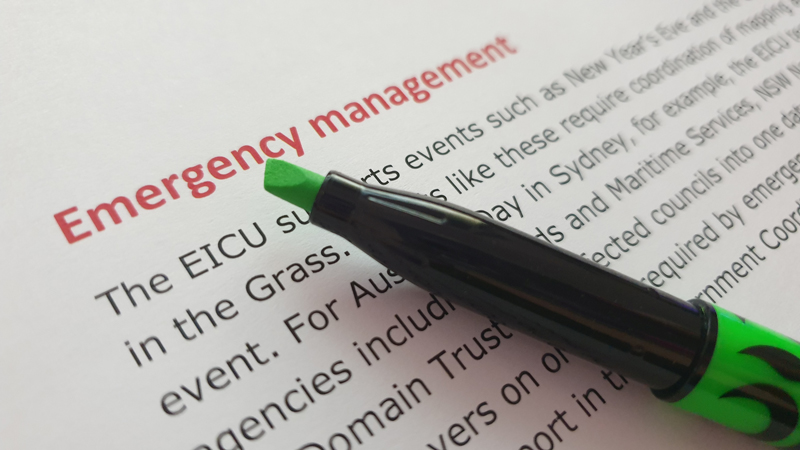Behind the scenes of a crisis there’s a team that supports emergency prevention, preparedness, response and recovery in ways you mightn’t expect
February 2020
In a major crisis, behind the sirens and first responders, DCS Spatial Services has an elite team of specialist staff working across all government agencies known as the Emergency Information Coordination Unit (EICU).
Highly specialised staff ensure the EICU is an agile group that is capable of collaborating across all levels of government, providing and sourcing quality geographical and spatial information. Much of this information is supported and supplied by other business units of Spatial Services which ensures a seamless flow of information.

During major planned or unplanned events and incidents, EICU is involved, collaborating behind the scenes on information supporting strategies and operations for prevention, preparedness, response and recovery.
When a foreign leader visits, or major events are held like Sydney’s Vivid festival, the EICU is involved and in emergency situations like bushfires, floods, terrorist attacks and natural disasters their role is vital to crisis management as they coordinate geospatial intelligence across up to 30 agencies providing a common theatre of operations.
As people’s lives and homes are threatened across New South Wales in a crisis, the EICU works behind the scenes with multiple emergency services coordinating data and use of geospatial technologies, which is critical to providing a cohesive response.
The EICU’s emergency support is not limited to data. In emergency situations, it provides relief staff for other government agencies in roles related to geographic information systems (GIS). The unit also provides ongoing support with recovery situation intelligence and maintains a presence at the state’s Office of Emergency Management (OEM) throughout extreme emergencies.
In addition to this, the EICU provides impact and intelligence in recovery efforts while providing the coordination of information that keeps emergency personnel and citizens safe in the aftermath of disasters. An example of this type of information is the sharing of asbestos data which, while not an imminent threat, could have long term consequences if not communicated after a fire or flood event.
Why have I never heard of EICU?
The EICU works in the background supporting, collaborating and collating information. It was established in 2002 as a counter-terrorist initiative by the NSW Government, the EICU’s role has extended to coordinating data for NSW’s emergency service organisations. It ensures the emergency management sector has the most authoritative spatial and related data available to minimise the impact of disasters on people and their homes and property.
The EICU is tasked to work within four levels of emergency management; prevention, preparedness, response and recovery and works with a diverse range of stakeholders.

What kind of information does EICU work with?
The EICU developed and now maintains the Emergency Services Spatial Information Library (ESSIL). The library combines data from more than 200 agencies supplying more than 11,000 spatial layers which are transformed into 350 seamless state-wide layers. These layers encompass all areas of emergency planning, response and recovery.
The ESSIL database starts with accurate basemaps of imagery and topography and extends all the way through to utilities, infrastructure and at-risk locations like childcare centres, hospitals, schools and aged care. It covers communication lines, utilities, roads, transport, the environment as well as historical disaster data from past fires, floods, earthquakes and bushfire prone areas.
EICU maintains a 3D model of the Sydney CBD, from the tops of buildings to underground infrastructure and utilities.
This comprehensive information is invaluable in preparing for an emergency situation and ensures all government agencies are working with the same quality up to date data in a crisis.
Who can see this information?
The Emergency Services Spatial Information Library is provided to the emergency management sector and security agencies across all levels of government.
Much of this data is publicly available however the coordinated intelligence is restricted.
Find out more
https://www.spatial.nsw.gov.au/what_we_do/emergency_management
